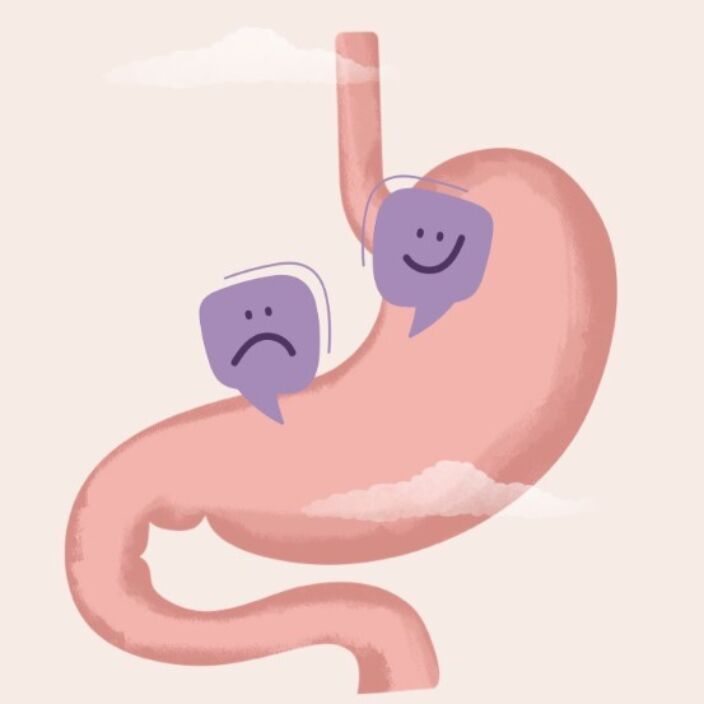Information on the treatment of gastroparesis
We know a lot, but at the same time very little about gastroparesis. Less research is done yet. There are some treatment methods, but not all of them are effective.



There are two guidelines described on the treatment of gastroparesis of adults. One from the United States, which is based on scientific research and the other from Europe, in which the advice given is based on the opinion of several European experts in this field. Additionally, it is important to understand that these guidelines are designed to aid the healthcare professional in their choice of treatment, but they can always chose other treatment options with good reasons.
Also, new treatments, who are not well researched, are often not described in these guidelines, because it is not known whether they are safe and effective as a treatment. The information below is based on these guidelines and the available scientific research on the mentioned treatments.
Diet
The first step in the treatment of gastroparesis is the explanation on an adapted diet, consisting of little particles, which makes is better to digest. Moreover, it is important that the patient remains in or achieves an adequate nutritional state. This can be achieved with oral (by mouth), enteral (directly in the stomach or small bowel) or if needed parenteral (intravenous feeding, directly in the blood stream) feeding. In the case of diabetic gastroparesis it is important that there is an optimal glucose control, to reduce the chance on aggravation of the symptoms in the future.
Gastric rest
If feeding in the stomach is not tolerated enough, this is called a decompensated gastroparesis, for which the advice in the Netherlands is ‘gastric rest’ (3 months). This is the main treatment used in Maastricht, which is the expertise center for gastroparesis in adults, in the Netherlands. The main goal of this treatment is to completely rest the stomach en feed directly in the small bowel.
This can be done by a nasal-duodenal tube, which is a feeding tube placed in the nose and passes the stomach (through the pylorus, stomach exit) with the tip of the tube in the first part of the small bowel. The feeding has to be given continuously, sometimes with a stop period each day.
If it likely that the feeding directly over the small bowel is needed for a longer period, a direct access to the small bowel can be indicated. This can be either a direct jejunostomy (access directly through the abdominal wall in the small bowel) or indirect via a gastrostomy with jejunal extension (access through the abdominal wall to the stomach, with a tube through the stomach exit to the small bowel). In the American guidelines there is a clear advantage for the direct jejunostomy, with a separate gastrostomy, if this is needed to vent the stomach from excess fluids. This is to prevent blockage of the pylorus (stomach exit) by a tube through this exit and the possibility to empty the stomach when needed. Another advantage of the direct jejunostomy is the reduced chance of luxation of the tube back into the stomach.
Medication
There are several medications that can be prescribed to enhance the motility of the stomach. However, it is important that any medication that can reduce the gastric motility are stopped (including morphine (derivates) and tramadol). Below we have described the medication that can be prescribed in the treatment of gastroparesis and whether they are actually effective as a treatment.
- Erythromycin:
This is a sort of antibiotic, which in a low dose also enhances the emptying of the stomach. This is mainly a temporary treatment, because the use of this medication longer than 4 weeks, can give complications - Metoclopramid:
Is advised in the treatment of gastroparesis, however, long term use (>12 weeks) kan cause complications, particularly in patients older than 65 years, diabetics, patients with liver and/ or kidney failure and patients who are using antipsychotic medication - Domperidon:
Is described in the American guideline as an option, however, it is prohibited in the USA to use. In the European guidelines it is not advised to used in the treatment of gastroparesis, because it does not enhance the gastric emptying or motility - Antacids:
These are not advised as a first choice medication in the treatment of gastroparesis. However, it can be subscribed as a supporting treatment in the case of reflux as an additional symptom - Other prokinetics, including Prucaloprid (4-HT receptor agonist):
These are developed and are mainly used in research settings. In the Netherlands Prucaloprid (Resolor) is available, however, will not be restituted by the insurance, and has to be paid for by the patient itself. It has quite some side effects and it takes 4 weeks to evaluate the actual effect on the gastroparesis. In the Netherlands Prucaloprid is mainly used in the constipation and IBS with constipation - Antidepressants (TCA or SSRI’s) and antipsychotics (Haldol):
These are not advised for the treatment of gastroparesis in both guidelines
Minimal invasive treatments
- Botox injections:
This appears to be not (long term) effective and is therefore not advised in both the American and European guideline. - G-POEM:
This is a new technique, in which the pylorus (stomach exit) is cut from the inside, to widen the pylorus canal. This is done by a gastroscopy, in which a camera on a flexible tube is passed through the mouth, throat, oesophagus and stomach. The improvement in the symptoms is mainly seen in the reduction of the frequency of vomiting, however, long term results are not available yet. Additionally, it is important that the small and large bowel to function normally, for this procedure to have a chance on success. This procedure is performed in Maastricht (in the Netherlands) and they use a good selection for the patients who are eligible for this treatment The European guidelines do not advise this treatment at this point, because the results on the effect vary in the scientific literature. The American guidelines don’t give any advice on this treatment, because it is mainly used in studies. Research from Maastricht show a success rate of 56% after 1 year, from a study with 24 patients. Patients give a score on the GSCI scale of 1-3 points, which is mainly based in the reduction of frequency in vomiting. The actual emptying of the stomach does not seem to improve after this treatment.
Invasive treatments
- Gastrostomy placement:
This is a direct connection from the skin, through the abdominal wall, to the stomach and is used for feeding or emptying of the stomach contents - Jejunostomy:
This is a direct connection from the skin, through the abdominal wall, to the first part of the small bowel and is used for direct (continuous) feeding in the small bowel. With this treatment there is no need to place a tube through the stomach to feed directly in the small bowel - Central venous line:
If it is really not possible to feed through the stomach and/or small bowel, than the last option is direct feeding in the bloodstream. To do this, a large intravenous line is placed in a large vein (in the neck), with the tip of this line placed closely to the heart. This parenteral feeding is preferentially temporary and is only used if feeding over the bowel is not possible anymore, because there is a high risk on serious complications with long term parenteral feeding - Pyloromyotomy:
This is the opening of the outer muscle layer of the pylorus (stomach exit) and is not advised anymore, because this has been taken over by the less invasive method G-POEM (described above) - (Partial) stomach resection:
This has been described, however, it only has been performed in very rare cases, for which the patient has to selected carefully. This is a large abdominal surgery and can not be redone or corrected in a later stage
References:
- Camelleri M, Kuo B, Nguyen L, Voughn M, Petrey J, Greer K, Yadlapati R, Abell TL. ACG Clinical Guideline: Gastroparesis. The American Journal of Gastroenterology. 2022 August; 117(8): 1197-1220
- Camelleri M, Sanders KM. Gastroparesis. Gastroenterology. 2022 Jan; 162(1): 68-87
- Schol J, Wauters L, Dickman R, Drug V, Mulak A, Serra J, Enck P, Tack J. United European Gastroenterology (EUG) and European Society for Neurogastroenterology and Motility (ESNM) consensus on gastroparesis. United European Gastroenterol J. 2021 Apr; 9(3): 287-306
- Strijbos D, Keszthelyi D, Smeets FGM, Kruimel J, Gilissen LPL, de Ridder R, Conchillo JM, Masclee AAM. Therapeuthic strategies in gastroparesis: Results of stepwise approach with diet and prokinetics, Gastric Rest, and PEG-J: A retrospective analysis. Neurogastroenterol Motil. 2019 Jun; 31(6): e13588
- Brouns J. De stapsgewijze aanpak van gastroparese. NED. TIJDSCHR. VOOR VOEDING & DIËTETIEK - 2021;76(1)


